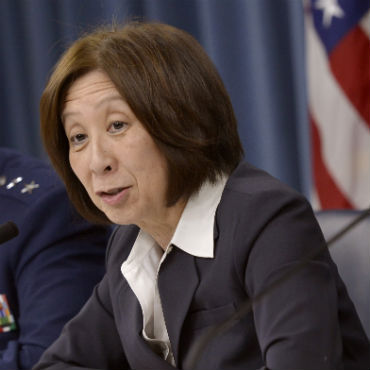DOD launches new spectrum strategy

In the long term, the Pentagon will look to replace legacy systems with more "militarily effective" technologies.

Defense Department CIO Teri Takai said on Feb. 20 that the Pentagon will look to replace legacy systems with more "militarily effective" technologies.
The Defense Department has outlined plans for a new approach to military use of electromagnetic spectrum, an increasingly precious resource subject to tug-of-war with the commercial world.
DOD officials described a strategy that will serve as the initial push to become more efficient in the use of spectrum while collaborating with industry to strike a balance between national security and economic interests competing for bandwidth.
"The release of the strategy is the first step," DOD CIO Teri Takai said in a Pentagon press briefing held Feb. 20, the day the strategy was issued. "It will be updated periodically to reflect lessons learned, the changing spectrum environment and our changing needs. This kicks off a multi-year effort to align existing processes and spur decisions over the future of key systems."
In the near term, Pentagon leaders will spend the next six months developing an implementation plan with a governance structure, roadmap and action plan that includes timelines and details for moving forward, Takai said. In the long term, DOD will look to replace legacy systems with more "militarily effective" and efficient technologies.
Officials in the press briefing said that it is too early to put a dollar figure on the strategy, which will unfold in coordination with other government agencies – chiefly the Federal Communications Commission and the National Telecommunications and Information Administration.
"If you look at where we are today, the objective is to be more proactive than reactive, to be followed with an implementation plan to build out" within the services, said Maj. Gen. Robert Wheeler, DOD deputy CIO for control, communications and computers and information infrastructure. "There are areas where we will save [and] others where will spend -- we have to work that out [from an] investment perspective."
The strategy comes as the military and the private sector vie for a limited amount of bandwidth. An increasing consumer demand for fast mobile capabilities, combined with growing requirements from troops in the theater, digital training and electronic warfare, means that the government needs a new way forward.
"These competing requirements for finite spectrum resources have changed the spectrum landscape, nationally and internationally, for the foreseeable future," the strategy states. "The demand for more and timely information at every echelon is driving an increase in DOD's need for spectrum. Increasingly lower echelons, including individual soldiers, require situational awareness information resulting in more spectrum-enabled network links. The growth in the complexity of modern military systems has similarly led to an increase in spectrum requirements."
Spectrum also is becoming more of a factor in DOD acquisition, the officials noted, as technologies evolve and inherently require more bandwidth. Takai pointed out that in five years, the spectrum picture will look significantly different than now.
"It's not a question how to utilize DOD's spectrum, but what are the opportunities to take advantage of spectrum currently owned and operated by industry, leveraging commercial technologies," she said. "Because of our long lead times ... it's important that we have a strategy that is thinking long-term. We cannot shift in a short-term frame -– we just have too much equipment and too much capability that has to be transitioned in a very thoughtful way so as not to impose a major burden on budgets and on taxpayers."


